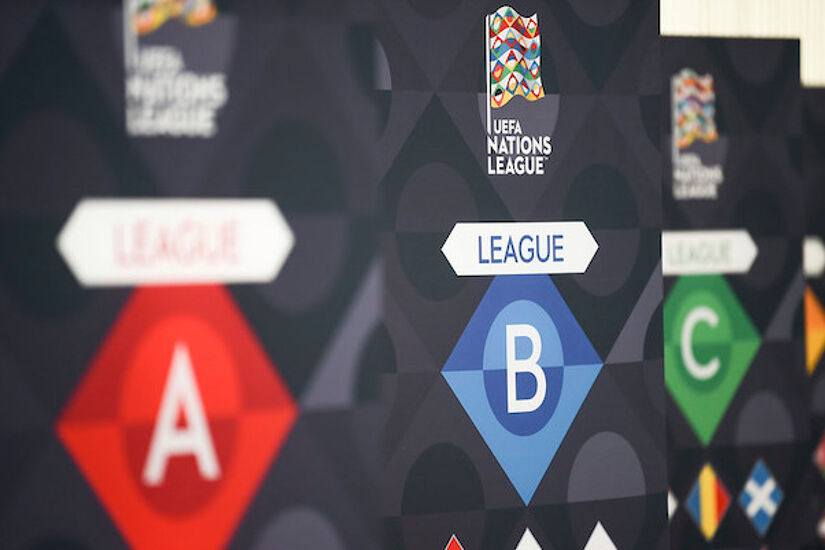Guess who's back, back again - UEFA Nations League explainer

Credit: Extratime Team (ETPhotos)
There is justifiably great excitement about Stephen Kenny’s first game in charge but nothing compared to the excitement for our UEFA Nations League expert Macdara Ferris. He just can’t get enough of European foootball’s least favourite football competition and has penned this explainer about the revised format for this year's Nations League.
Yes, the UEFA Nations League is back and it is better, well with a new format at least and one that means the Republic of Ireland are still playing in the second tier of the competition (i.e. League B) despite finishing bottom of their group in League B last time out.
That is because UEFA have expanded the groups in this league from three to four teams and hence the Boys in Green managed to hang onto a position in League B.
League B
The winners of each of the groups will be promoted to League A and the teams that finish bottom of their groups will be relegated to League C for the next edition of the competition.
Group B1: Austria, Norway, Northern Ireland, Romania
Group B2: Czech Republic, Scotland, Slovakia, Israel
Group B3: Russia, Serbia, Turkey, Hungary
Group B4: Wales, Finland, Republic of Ireland, Bulgaria
League A
The top tier of the competition is League A which is also made up of four groups of four, with the winners of each group going forward to the finals (semi-final, third/fourth place playoff and final). One host country from the finalist teams will host the finals.
In case you need reminding Portugal were the winners of the inaugural competition. The bottom side in each group will be relegated to League B.
Group A1: Netherlands, Italy, Bosnia-Herzegovina, Poland
Group A2: England, Belgium, Denmark, Iceland
Group A3: Portugal, France, Sweden, Croatia
Group A4: Switzerland, Spain, Ukraine, Germany
League C
This is another league with four groups of four league. The group winners will be promoted to League B and two of the teams that finish bottom of their groups will be relegated to League D for the next edition.
Play-offs (home and away) will be organised between the four teams that finish bottom of their groups to decide which two will be relegated. Those games will take place in March 2022.
Group C1: Montenegro, Cyprus, Luxembourg, Azerbaijan
Group C2: Georgia, North Macedonia, Estonia, Armenia
Group C3: Greece, Kosovo, Slovenia, Moldova
Group C4: Albania, Belarus, Lithuania, Kazakhstan
League D
With the expansion of the higher level leagues, the bottom league has shrunk from the last edition. There are just two groups – one of three teams and one of four. The group winners will be promoted into League C.
Group D1: Faroe Islands, Latvia, Andorra, Malta
Group D2: Gibraltar, Liechtenstein, San Marino
UEFA Nations League route to the World Cup
These aren't just a glorified set of friendlies but do offer a route into the World Cup - albet a complicated one. Sure it wouldn't be the UEFA Nations League if it wasn't all a bit complicated.
Two teams will earn their qualification route to the World Cup in Qatar in 2021 through the UEFA Nations League.
The main qualification route will be through the World Cup qualifiers. There will be ten groups with the teams who win the groups qualifying automatically. The ten runners up will be go into the playoffs along with two teams coming from the UEFA Nations League.
Those two teams will be the two highest ranking teams from the Nations League who do not finish in the top two in their World Cup qualifying group.
The 12 teams will be drawn into three play-off paths for one-off semi-finals and a final. The three path winners qualify for the World Cup
UEFA Nations League Preview: Bulgaria -v- Republic of Ireland https://t.co/8M7qlFYmmJpic.twitter.com/VNM7Ybm373
— Extratime.com (@ExtratimeNews) September 2, 2020

